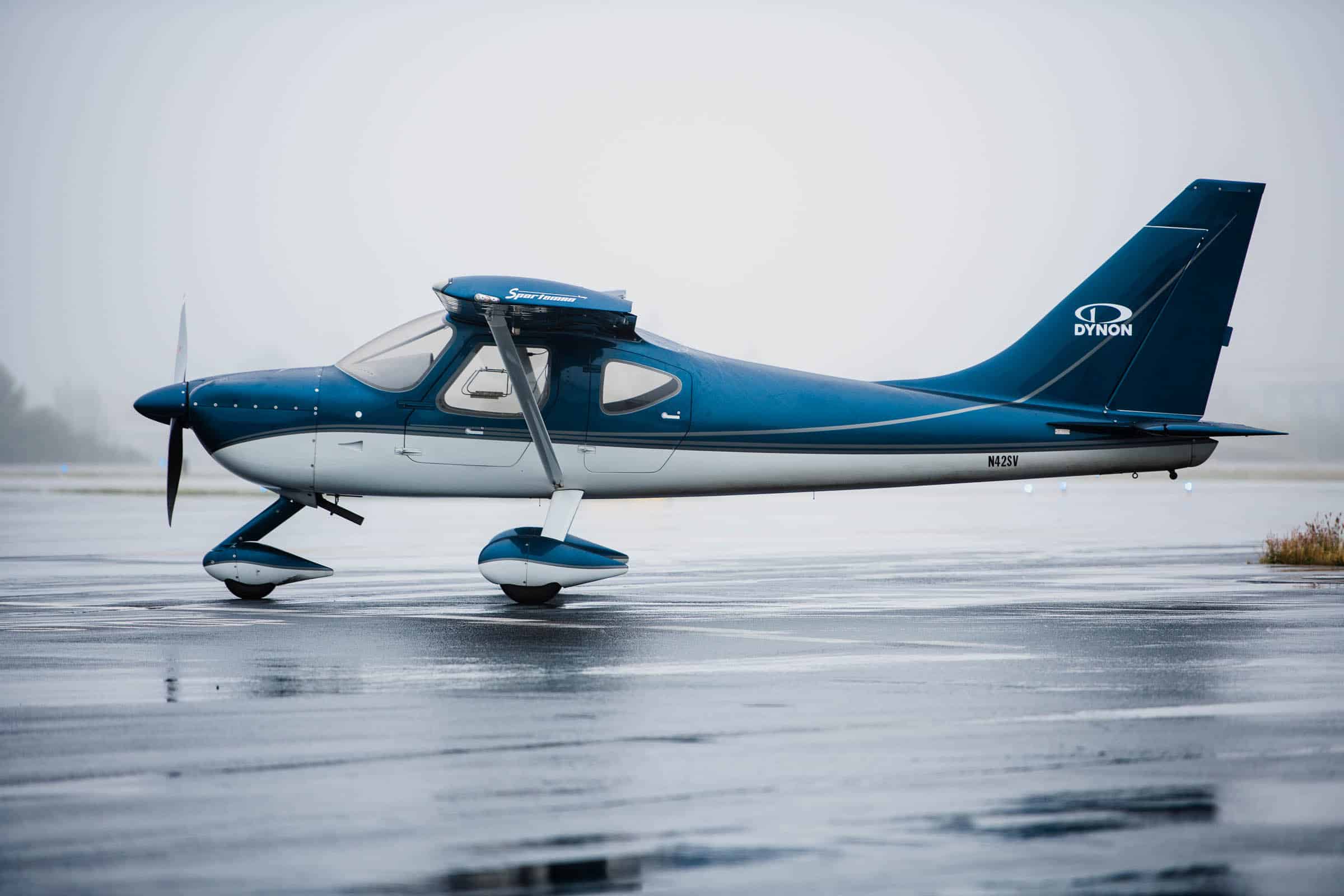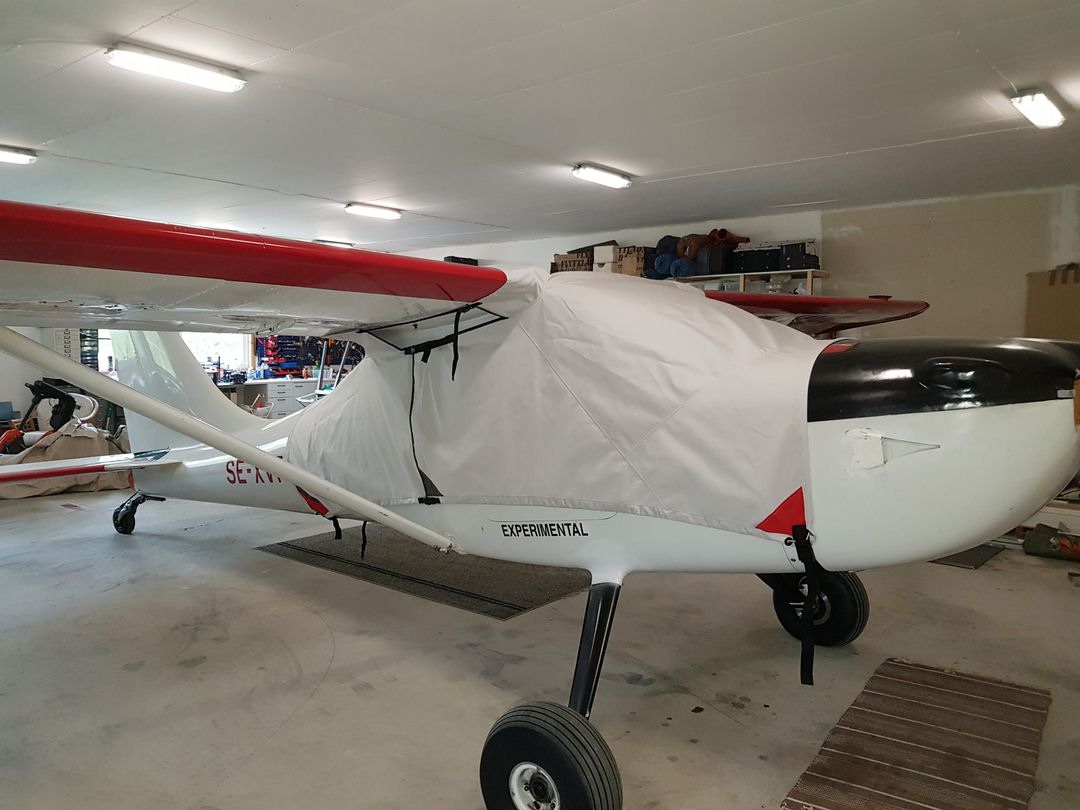Glastar Aircraft - . This is part of an ongoing series of articles for pilots new to the experimental/enthusiast world. It aims to provide a good starting point for those interested domestically. Designs to be covered in future installments include the very popular RV-6/A Van and the Ageless Kit Fox.
This article begins a new series that begins with our previous articles on buying used pilot/enthusiast aircraft. Where the previous series took a broad look at the general topic of buying a used pilot, in this series we'll focus on one model and one aircraft at a time, going into the details the average buyer would want to see.
Glastar Aircraft

Here are the main points to consider: make and model history, design overview, what to look for in a specific make and model, engine options, common avionics systems, common modifications, performance and support. Both owner - factory and consumer groups end this collection, we welcome feedback from our readers, so we can make it the best resource for E/A-B buyers who can use it.
Aircraft Photo Of C Fgte
The Stoddard-Hamilton Glastar was started in 1994 by the Continental IO-240, but soon all were using the larger engine. In fact, no more than two or three Continental-powered customer aircraft were built, with the Lycoming O-320 and O-360 engines being the most popular choices due to cost and the abundance of used examples. Several manufacturers have opted for various versions of Subaru's automatic engine swap, but many of these aircraft have been re-engined with Lycoming due to in-flight engine failures and other problems.
Your author's first Glastar. It took about 2500 hours and four years to build. After three years we switched it to regular gears. It took about 40 hours to make this switch the first time, but it was easy to replace later.
Tom Hamilton was the designer of this popular utility aircraft, with Ted Setzer doing most of the prototype work and Tom Setzer doing most of the detail design work. The Glastar kit sold well in its day, with over 600 of them sold by the time your author took delivery in mid-1998. Unfortunately, Stoddard-Hamilton soon ran into financial difficulties and by 1999 was bankrupt. Longtime EAA member Tom Watten bought the company out of bankruptcy and formed two new companies, New Glastar LLC and New Glasire LLC. The two companies eventually merged into a new company, Glassire Aviation LLC, managed by Michael Via. Under his direction, the design rights for the certified version of the Glastar were sold to OMF Symphony, who eventually produced several certified aircraft that were unfortunately not very successful. However, Glasire used the money from that sale to develop the Sportsman 2+2 and continues to sell the kit today.
Creator Carlos Emmons has enjoyed his Glastar for years. Especially with simple equipment, the Glastar is a popular aircraft for exploring the mountains and backcountry of the West.
Glasair Glastar I For Sale
In the end, about 930 Glostar kits were sold, including the tail kits alone. An estimated 600 complete aircraft were built, most of which were registered in the United States, but significant numbers were also registered in Canada and Australia. There are also many airlines in Europe, most of which are based in the UK.
Unfortunately, when the Glastar entered the market with the Sportsman, they realized that the similarity in production costs meant that the Glastar and its little brother could not create enough of a price difference to continue selling both kits. So, although it didn't technically take off until 2005, the two-seat Glastar was practically finished by 2002. Currently, Glasair Aviation does not support the Glastar except for parts that are shared with the current Sportsman design. Gone are the fiberglass body molds as well.
The Glastar kit comes with arrow vortex generators mounted on the wing roots and in front of the wings to improve flow coupling and help maintain low speed.

The Glastar concept is a two-seat utility aircraft that is easy to build and easy to store and offers significant cost savings to the owner, while offering a wide performance envelope towards the low speed range. It facilitated easy storage with folding wings, which became a popular selling feature, but was rarely used after the aircraft was completed. Characteristics that will endear the aircraft to prospective owners include docile stall characteristics, good short-field performance and a cruise speed of 130 knots. At the time, its main competition was the RV-6 and RV-6A, which was clearly a faster design, but lacked payload and cabin space compared to the Glastar.
Glastar Vs. Sportsman
Many felt that comfort and utility were more important than cruising speed, and they still are, but when everyone started increasing the RV-6's gross weight to 1,800 pounds, contrary to Dick VanGrunson's objections, some utility advantages disappeared. Both planes are still very popular in the used aircraft market, so there is clearly room for both options.
As Glastar moves beyond the small engine concept, focus on center of gravity is critical, especially with the O-360 and constant speed mount. This means moving the battery as far back as possible to balance the front weight. However, some Glastars end up with no elevator at all on landing, forcing many owners to place the vortex generators below the horizontal stabilizer. Many builders have opted for the massive angle valve IO-360 engine, but weight and CG considerations make it the right choice. Most buyers looking for a well-used Glastar prefer a larger valve engine.
As with any used aircraft purchase (left), a thorough pre-purchase inspection by an experienced mechanic is essential. Differential compression testing is a small but important part of the pre-purchase inspection.
Your buying instructions should begin with a review of the previous KITPLANES® series on buying a used pilot airplane. I won't repeat that information here, except to say that it's important to do your homework when buying a used aircraft and get an adequate pre-purchase inspection by someone familiar with Glastar.
Glasair Aviation Glastar, Sportsman 2+2: Cubiertas, Tapones, Etc
As with any used test aircraft, it is important to check records with particular care in accordance with factory service bulletins. Many of these were probably addressed during construction, but a thorough record of compliance is a good sign of a conscientious owner. A complete list of all factory service bulletins can be found online.
Of particular note are Service Bulletins #7 calling for a new reinforced control weldment, #14 for more reinforcement in the tail, #43 and #49 calling for welding to add header tanks to prevent fuel starvation on long landings. Inspection of a limited number of cages that have poor weld penetration.
My dear late friend, Ed Zaleski (right), checks the wing's angle of attack on the Glastar project we're building. Every manufacturer should do this, but not all do. Signs that this step has been skipped are heavy wing and/or aileron trim tab installation on the aircraft. The ideal solution is to reduce the angle of attack of each wing to 0.1 degrees.

There is also Service Bulletin #25 that talks about cages causing large differences in wing angle of attack, where they state that a 1 degree difference is the maximum change tolerable. However, the reality is that any change greater than 0.1 degrees will produce unfavorable flight characteristics. Some manufacturers solve this problem by installing standard body trim tabs or adjustable trims, but it's best to check the angle of attack with the Smart Surface and plan to correct any misalignment by modifying the rear spar struts.
Glasair Announces Indefinite 'pause' In Operations
Glastar has quite a few kits that can easily bend awkward thermal gear mounts. These were quickly identified and resolved. However, the original design relied on sacrificing gear struts to protect the cage in very hard landings. For this reason, it is always a good idea to look at the front view of the aircraft for any signs of gear strut bending. The ground ring can also bend the gear base, so it's a good idea to inspect the dragger tail gear more closely. The good news is that bent gear legs can often be straightened and are readily available if that's not an option.
There are five walls that builders must install in the fuselage, starting at the tail end of the trunk and moving toward the tail. There are several ways to break these, two of which are discussed in service bulletins, but none
Glastar sandblaster, glastar grinder, glastar super star ii, glastar grinder replacement parts, glastar foiling machine, glastar, glastar superstar ii glass grinder, glastar aircraft for sale, glastar all star g8 grinder, glastar all star grinder, glastar aircraft kit for sale, glastar grinder bits
